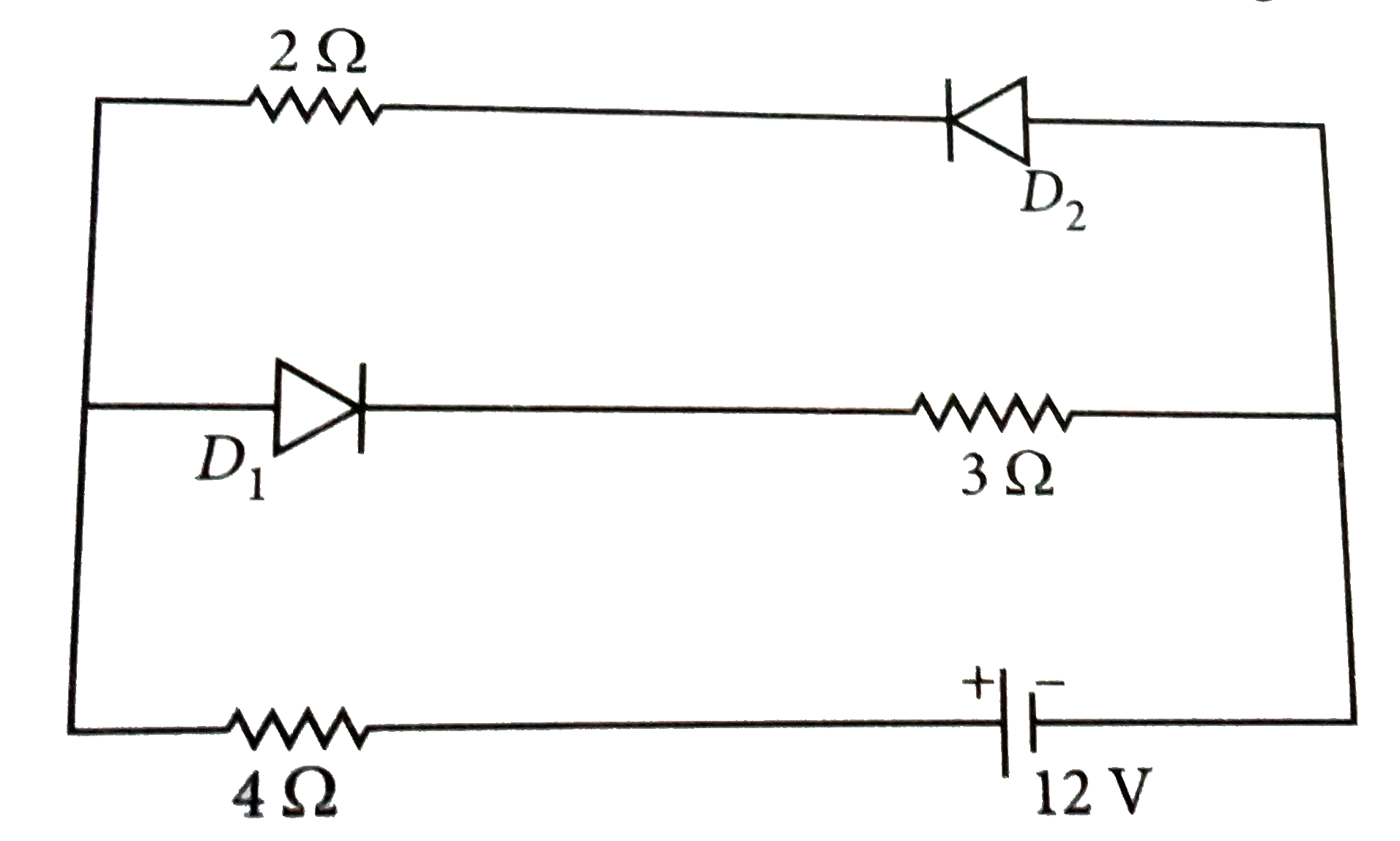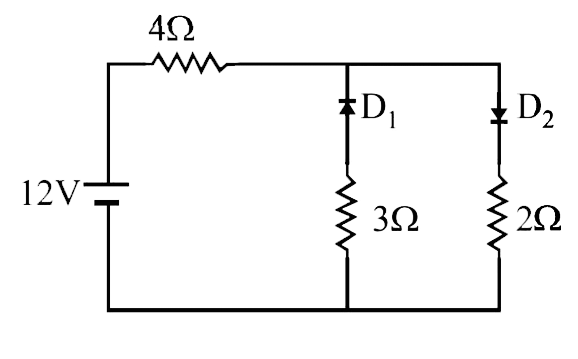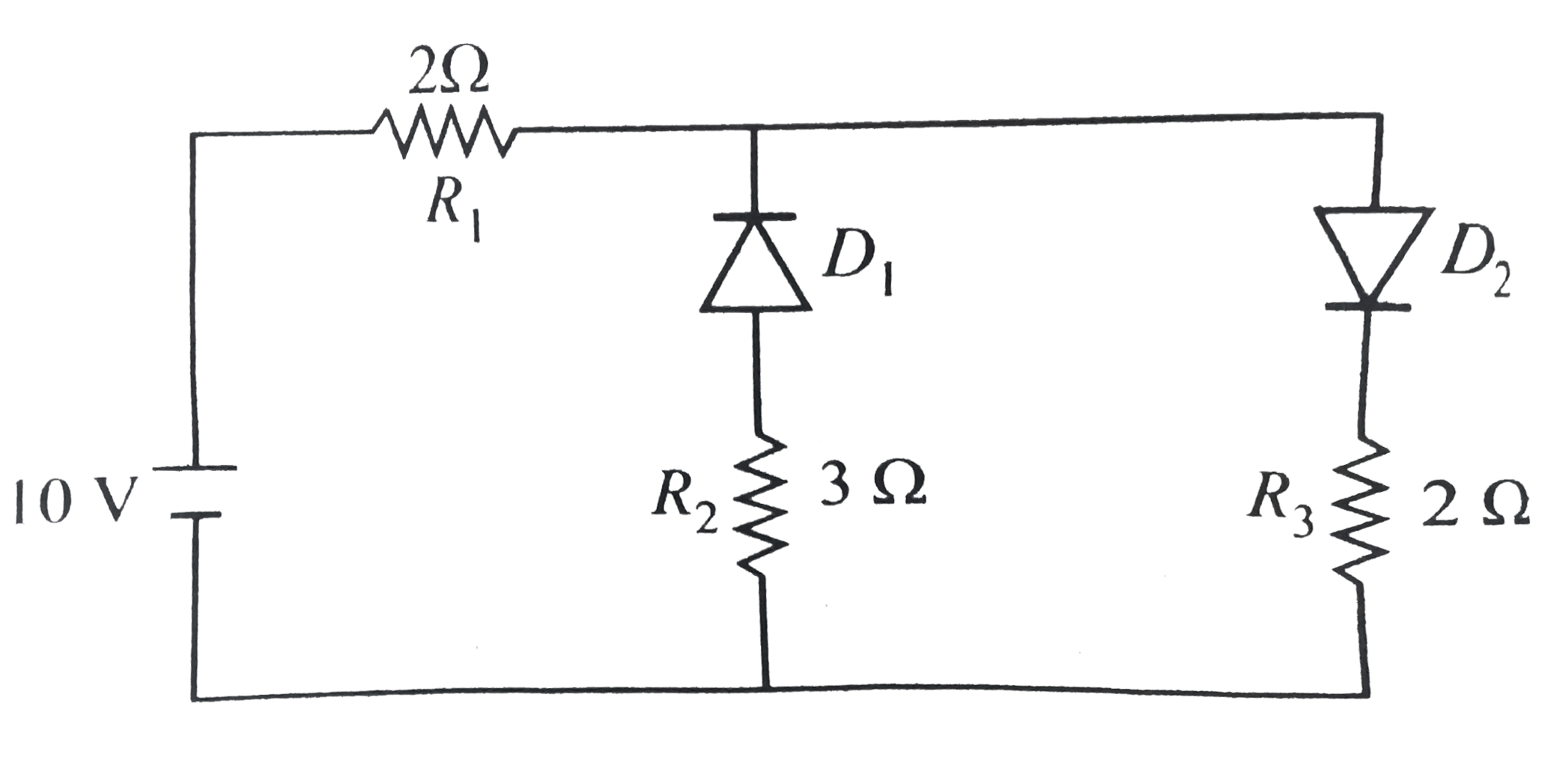The circuit has two oppositely connected ideal diodes in parallel . What is the current following in the circuit ?

A
2.0 A
B
1.33 A
C
1.71 A
D
2.31 A
Text Solution
The correct Answer is:C
Here, D1 in forward biased & D2 is reverse biased,
So D1 conducts .
∴i=ED=12V7Ω=1.7A
|
Topper's Solved these Questions
- SOLIDS & SEMICONDUCTOR DEVICESBOOK - MODERN PUBLICATIONCHAPTER - SOLIDS & SEMICONDUCTOR DEVICESEXERCISE - Revision Test
28 Videos
- SOLIDS & SEMICONDUCTOR DEVICESBOOK - MODERN PUBLICATIONCHAPTER - SOLIDS & SEMICONDUCTOR DEVICESEXERCISE - Multiple Choice Questions - LEVEL -III (Questions From AIEEE/JEE Examination)
9 Videos
- ROTATIONAL MOTIONBOOK - MODERN PUBLICATIONCHAPTER - ROTATIONAL MOTIONEXERCISE - RCQ
8 Videos
- TRANSFERENCE OF HEAT BOOK - MODERN PUBLICATIONCHAPTER - TRANSFERENCE OF HEAT EXERCISE - Recent Competitive Questions
4 Videos
Similar Questions
Knowledge Check
The circuit has two oppositely connected ideal diodes in parallel. What is the current flowing in the circuit?
 A2.0AB1.33 AC1.71 AD2.31 A
A2.0AB1.33 AC1.71 AD2.31 AThe circuit has two oppositely connected ideal diodes in parallel. What is the current flowing in the circuit?
 A2.0AB1.33 AC1.71 AD2.31 A
A2.0AB1.33 AC1.71 AD2.31 AThe circuit has two opposotively connected ideal diodes in parallel what is the currect flowing in the circuit ?
 A1.71AB2.00AC2.31AD1.33A
A1.71AB2.00AC2.31AD1.33A
What is the current in the following diode circuit?

View SolutionWhat is the current in the following junction diode circuit?

View SolutionThe given circuit has two ideal diodes connected as show in the figure. The current flowing through the resistance R1 will be

View SolutionThe circuit has two oppsitely ideal diodes in parallel. What is the current flowing in the circuit.
_E01_482_Q01.png)
View SolutionThe given circuit has two ideal diodes connected as show in the figure. The current flowing through the resistance R1 will be

View Solution

